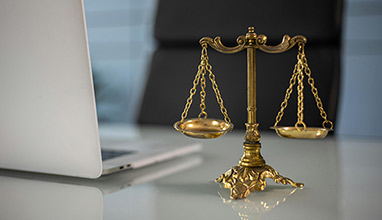The myth of multitasking and how to get more things done in less time
Are you one of those people who pride themselves on being a multitasker and doing several things at once? We’ve got some news for you: multitasking is a myth or at least it’s not exactly what you imagined it to be.

We live in a crazy busy world where we have very limited time to fulfill the tasks on our daily agenda, so it’s no surprise that multitasking has become some sort of badge of honor, especially in fast-paced work environments. These days, multitasking is regarded as an essential skill across multiple industries and an ability that you should master if you want to stay competitive and build a successful career.
But is it possible that we could have gotten it all wrong? According to experts, that’s exactly what happened. Apparently, multitasking is nothing but a long-perpetuated myth that we came to accept as a truth.
So, if you have countless tabs open on your PC and you’re trying to write an email, while listening to music, while preparing a snack, while doing the dishes and the laundry, you might want to stop for a moment and read about how you’re not actually multitasking.
Why multitasking is not what you think it is
It would be absolutely awesome to be able to perform multiple tasks at the same time, but science begs to disagree. Multiple studies show that multitasking is nothing more than a myth, albeit one that is really hard to let go of.
Science to the rescue
So, what did neuroscientists find out in their research? After numerous investigations they came to the conclusion that we simply don’t have the ability to do several things at once. Our brains aren’t wired that way and they don’t have the capacity to process more than one task at a time. While we might be able to do two simple things at once like walking and talking, when it comes to more complex tasks, the brain can’t focus on more than one at a time.
The harsh truth
But then what happens when we try to do more tasks simultaneously and we falsely believe we succeed? Apparently, what we’re doing when we think we’ve mastered the art of multitasking is switching between tasks very fast.
There’s a start/stop process involved in it that helps us perform tasks successively, giving us the false impression that we are doing everything simultaneously. And the bad news is that this start/stop process is not helping us save any time at all. In fact, what it does is waste more of our energy, make us more prone to mistakes and reduce our productivity levels.
How to get more things done in less time
If multitasking isn’t the superpower that we all thought it was and if it’s not bringing us any real benefits, how can one become more efficient and get more things done in a shorter period of time? Luckily, there are other skills or tricks you can use to achieve this objective and they’re all tried and tested.
Stay organized
This might sound like such trivial advice, but it doesn’t take away from the fact that it is an extremely useful one. Chaos and disorder are major productivity killers, making you waste more time than necessary on tasks that would otherwise be fulfilled in no time. So, before you get down to business, make sure you create a daily work schedule with all the tasks you need to accomplish and set your priorities in the right order. That will leave less room for mistakes and wasted time.
Learn to delegate
You might have a thousand responsibilities to take care of as a busy professional, but you have to be realistic about your limits. You can’t possibly be everywhere and do everything on your own. When you have more than you can handle on your plate, it’s time to start delegating some tasks to the right people. Let people from your team handle the jobs that are less important or consider the benefits of a virtual assistant service. This can help you clear up your schedule a bit, so you can have more time to focus on the more important tasks or to simply enjoy your life.
Block distractions
Constant distractions can also get in the way of getting things done in a timely manner. That’s why we suggest you take a few steps to keep common distractions at bay. Set up a certain period of time when you check your emails and messages, then block your notifications, put your phone away and focus on the task at hand. Refrain from checking your social media accounts every five minutes and turn off all devices that can distract your attention like TV or radio.
Take regular brakes
Taking regular breaks can sound counterproductive, but it’s quite the opposite. If you want to maintain your energy levels and focus for longer, you have to alternate between periods of work and breaks. When you take regular breaks, you’re not wasting your time, but you’re actually keeping your mind fresh and avoiding exhaustion from setting in, thus increasing your long-term productivity.
Create a proper work environment
You can’t work efficiently in an environment that is filled with distraction and doesn’t provide the peace and quiet you require to fulfill your duties. This stresses the importance of creating a well-organized work space that provides comfort and promotes focus. Keep every corner of your office clean and tidy, make sure all items are in their right place and you’ll notice how much of a difference this can make.
While people’s addiction to multitasking might not go away anytime soon, at least now you know that it’s not the key to success in your personal or professional life. With a little patience and practice, one can learn to replace the tendency to do more things at the same time with the productivity tips we’ve mentioned above.
Hits: 8234 | Leave a comment
















